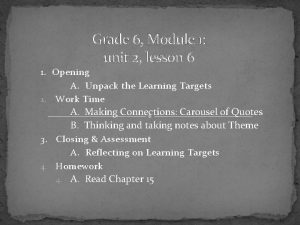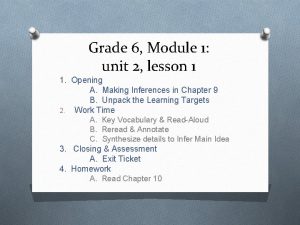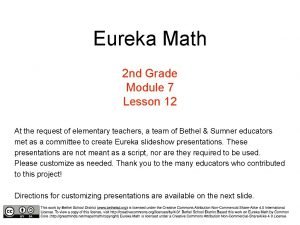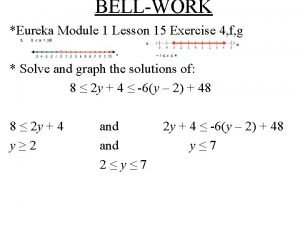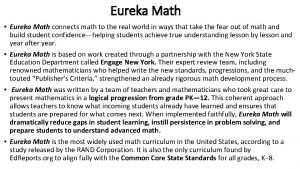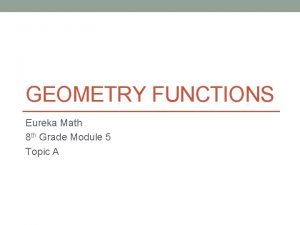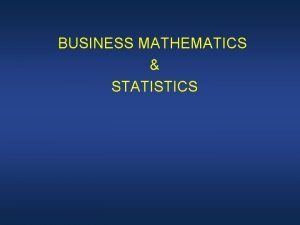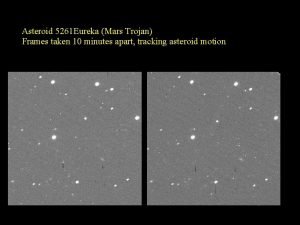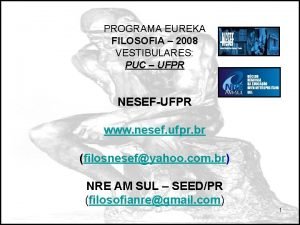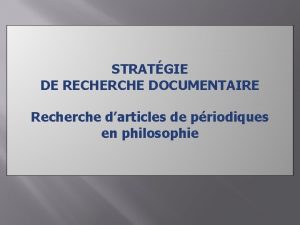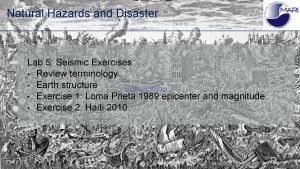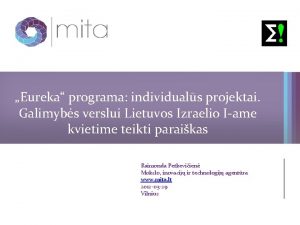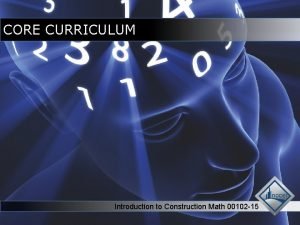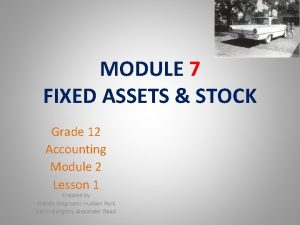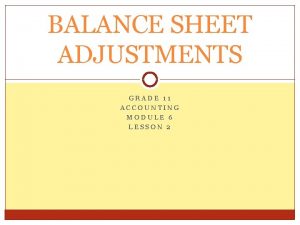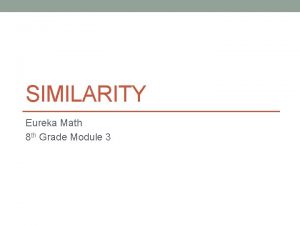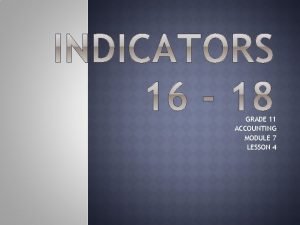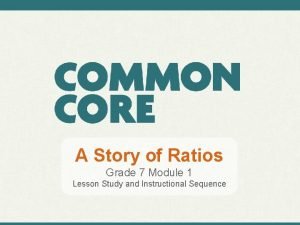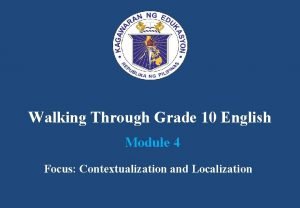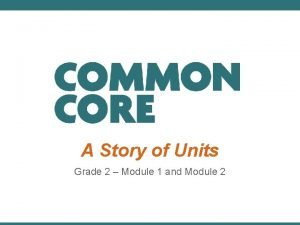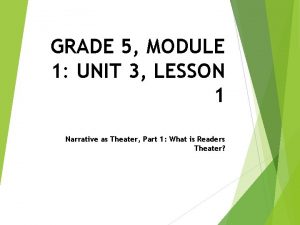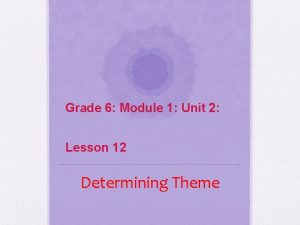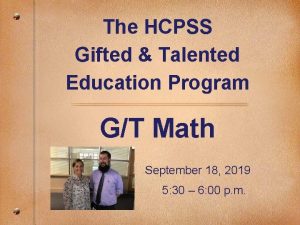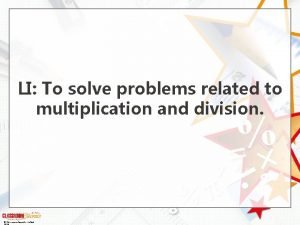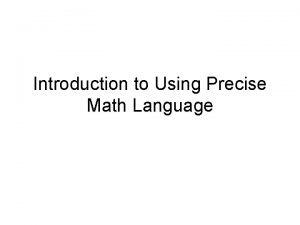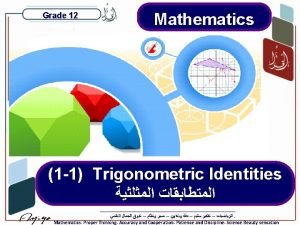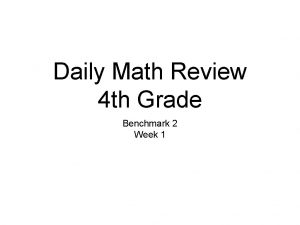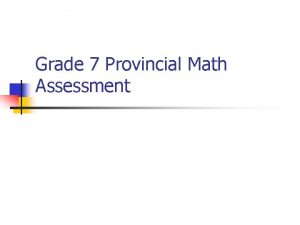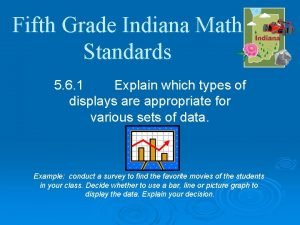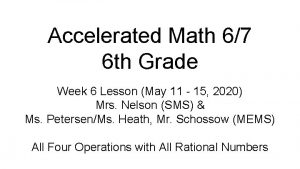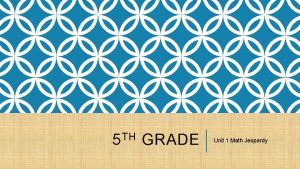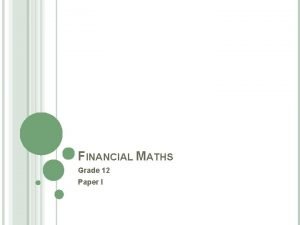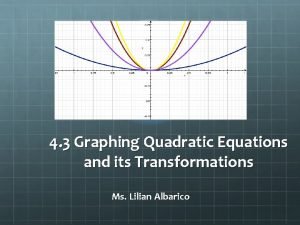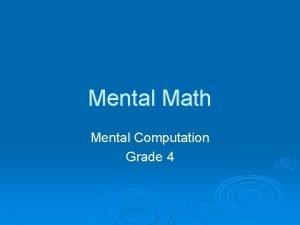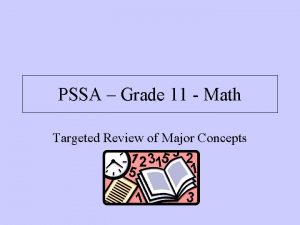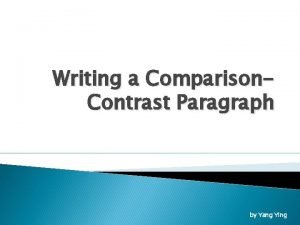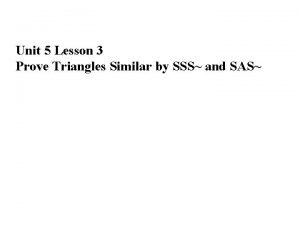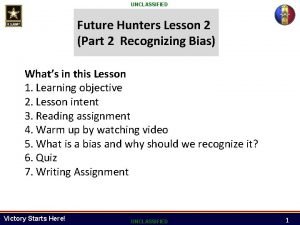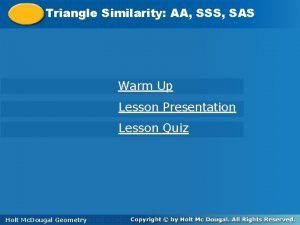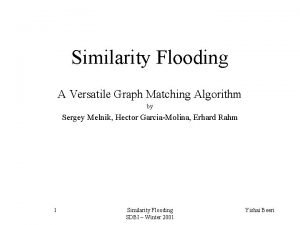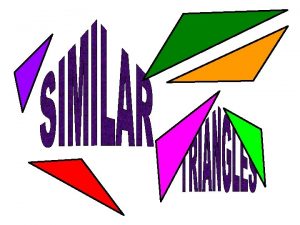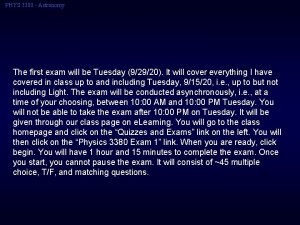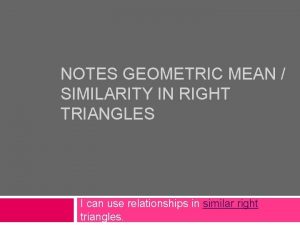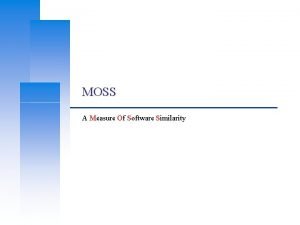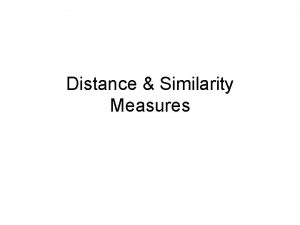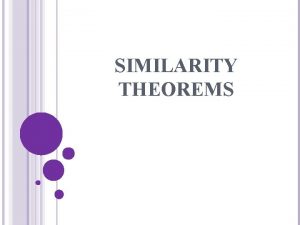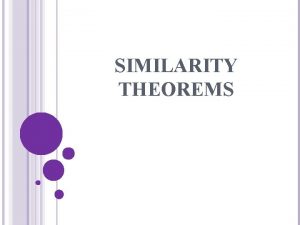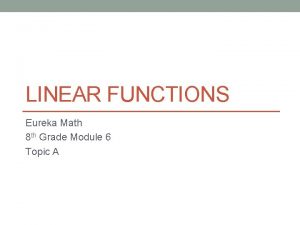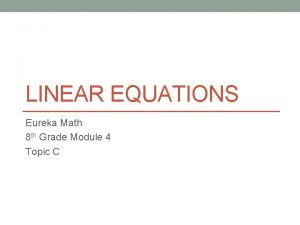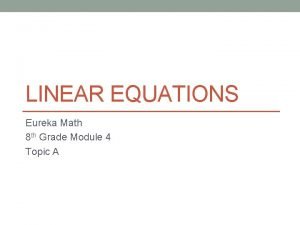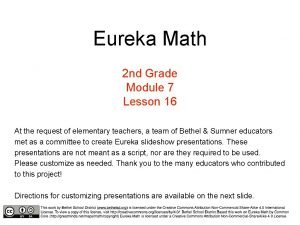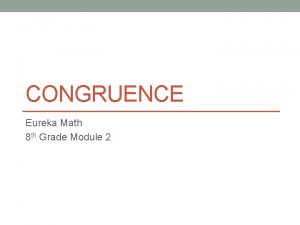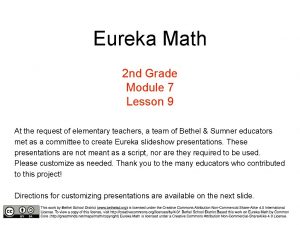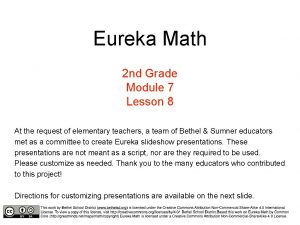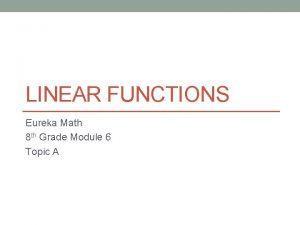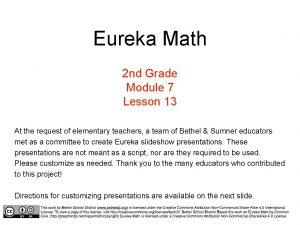SIMILARITY Eureka Math 8 th Grade Module 3


































































































- Slides: 98

SIMILARITY Eureka Math 8 th Grade Module 3

LESSON 1 Review/explore, notes, workshop

Similar or no? Recall: Informally, two shapes are said to be similar if they have the same shape but not necessarily the same size.

Similar or no? Recall: Informally, two shapes are said to be similar if they have the same shape but not necessarily the same size.

Similar or no? Recall: Informally, two shapes are said to be similar if they have the same shape but not necessarily the same size.

Similar or no? Recall: Informally, two shapes are said to be similar if they have the same shape but not necessarily the same size.

Similar or no? Recall: Informally, two shapes are said to be similar if they have the same shape but not necessarily the same size.

Similar or no? Recall: Informally, two shapes are said to be similar if they have the same shape but not necessarily the same size.

Similar or no? Recall: Informally, two shapes are said to be similar if they have the same shape but not necessarily the same size.

Similar or no? Recall: Informally, two shapes are said to be similar if they have the same shape but not necessarily the same size.


Notes Dilations – stretching or shrinking with a scale factor Scale factor – the consistent factor by which all items are multiplied by to maintain proportionality • If the scale factor is greater than 1, the figure grows • If the scale factor is less than 1 the figure shrinks • If the scale factor is 1, the figure is congruent • Dilations happen with a center which does not move • Maps lines to lines, angles to angles, points to points • Angles are preserved • Lengths are multiplied by the scale factor • Dilated points are denoted using “Prime” notation (P’) • The center, a point, and the image point all fall on one line

Workshop Must Do • Lesson 1 cw #1 -4 Can Do • Khan academy • PARCC tasks • Test rewrites

LESSON 2 Examples(4), workshop

Example 1 Scale factor = 2

Example 2 Scale factor = 3

Example 3

Example 4 Scale factor = 1/2 5 cm 8 cm


Workshop Must Do • Lesson 2 cw #1 a-e Can Do • Khan academy • PARCC tasks • Angle review/practice

LESSON 3 Examples(3), workshop

Example 1

Example 2

Example 3

Workshop Must Do May Do • Lesson 3 cw #1 -3 • Khan academy • Exit ticket lesson 1&2 • PARCC task on transparency • Extra practice • Inky puzzles

LESSON 4 Examples/discussion, workshop



Workshop Must Do May Do • Finish Lesson 3 cw #1 -3 • Khan academy • Lesson 4 classwork 1 -2 • PARCC task on transparency • Extra practice • Inky puzzles

LESSON 5 Discussion, examples (3), workshop

Recall When you dilate two points with the same scale factor and connect the points, parallel lines are created. In the diagram below, PQ and P’Q’ are parallel and P’Q’ is equal to PQ multiplied by a scale factor, r. What else do you think is true?

Example 1 Scale factor = 2

Example 2 Scale factor = 11/7

Example 3 Scale factor = 5/8

Workshop Must Do May Do • Lesson 5 #1 -3 • Khan academy • Exit ticket 3&4 • PARCC task (transparency) • Extra practice sheet • Inky puzzle

LESSON 6 Discussion, examples (3), workshop

Example 1

Example 2

Example 3

Example 4

Workshop Must Do • Lesson 6 #1 -8 May Do • Khan academy • PARCC task (transparency) • Extra practice sheet • Notes sheet • Folder organize

LESSON 7 Demonstration, workshop

What do you know about dilations?

Bringing it together

Workshop Must Do May Do • Complete CW & HW 1 -6 • Khan academy • Exit ticket 5&6 • PARCC task (transparency) • Extra practice sheet • Notes sheet • Folder organize

LESSON 8 Demonstration/examples, workshop

Do they look similar?

Notes • Two figures are similar if they can be mapped onto each other using a sequence of dilations and rigid motions (reflections, translations, and rotations)

Example 1

Example 1 continued

Example 2

Example 2 continued

Example 2 continued

Example 3

Example 3 continued

Example 4

Example 4 continued

Example 5

Example 6

Workshop Must Do • Lesson 8 cw #1 -4 May Do • Khan academy • Test rewrites

LESSON 9 Workshop, discussion, notes

Workshop Must Do • Lesson 9: exploratory challenge #1 and #2 May Do • Khan academy • Test rewrites

Notes • Similarity works in both directions. So if Figure A is similar to Figure B, then Figure B is also similar to Figure A. A • Similarity is also transitive, meaning if Figure A is similar to Figure B, and Figure B is similar to Figure C, then Figure A must be similar for Figure C. B A B C

LESSON 10 Discussion, notes, examples(3), workshop




Notes Two triangles are always similar if they have two corresponding angles that are equal. • This is because if two angles are equal, the 3 rd angle must also be equal in order to add up to 180 degrees.

Example 1

Example 2

Example 3

Workshop Must Do May Do • Lesson 10 #1 -3 • Khan academy • Lesson 8 & 9 exit ticket • Inky puzzles

Warm Up Review Simplify each expressions using the laws of exponents:

Laws of Exponents Product Rule: when multiplying powers with the same base, keep the base and add the exponents. Quotient Rule: when dividing powers with the same base, keep the base and subtract the exponents. Power to Power Rule: When raising a power to another power, keep the base, multiply the exponents. “When in doubt, write it out. ”

LESSON 11 Examples(4), workshop

Example 1 Are these triangles similar?

Example 1 continued Are these triangles similar?

Example 2 Are these triangles similar?

Example 3 Given that these triangles similar, what is the length of AB’?

Example 4 Given that XY is parallel to X’Y’, are these triangles similar? If so, can we find the length of OX’ and OY’?

Example 5 Are these triangles similar?

Workshop Must Do • Lesson 11 #1 -3 May Do • Khan academy • PARCC Tasks • Inky puzzles • Exponents review/practice • Test rewrites (tomorrow last day)

Warm Up Review Simplify: Select all that apply

LESSON 12 Example(1), workshop

Example Not all flagpoles are perfectly upright; some are tilted or bent. Imagine a flagpole near an abandoned building. How can we find the length of the flagpole? Assume: the length of the shadow is 15 feet, there is a mark 3 feet up on the pole and it’s shadow is 1. 7 feet on the ground.

Workshop Must Do May Do • Finish Lesson 11 #1 -3 • Khan academy • Lesson 12 #1 -3 • PARCC tasks • Exit ticket lessons 10 & 11 • Exponents review and practice • Test rewrites - last day • Inky puzzles

Warm Up Review Simplify (expand!)

LESSON 13 Video, Discussion/proof, workshop

Recall – Pythagorean Theorem

Recall – Pythagorean Theorem

Recall – Pythagorean Theorem

http: //www. youtube. com/watch? v=QCyvx. YLFSf. U

Workshop Must Do May Do • Finish Lesson 12 #1 -3 • Khan academy • Lesson 13 #1 -3 • PARCC tasks • Exit ticket lesson 12 • Exponents practice • Note sheet • Folder organize • Complete all classwork and homework 8 -12

LESSON 14 Notes, Examples(2), workshop

Pythagorean Theorem • So far we have shown with two proofs and much practice that if a triangle is a right triangle, then a 2 + b 2 = c 2 • The converse of this is also true: If a 2 + b 2 = c 2, then a triangle is a right triangle.

Example 1

Example 2

Workshop Must Do Can Do • Finish all classwork 8 -12 • Khan academy • Finish lesson 13 #1 -4 • PARCC tasks • Lesson 14 • Exponents practice • Note sheet • Folder organize
 Grade 6 module 1: unit 2 answer key
Grade 6 module 1: unit 2 answer key Eureka math grade 6 module 1 lesson 1
Eureka math grade 6 module 1 lesson 1 Eureka math 3rd grade module 7
Eureka math 3rd grade module 7 Eureka math algebra 1 module 1 lesson 15
Eureka math algebra 1 module 1 lesson 15 Eureka math algebra 1 module 4
Eureka math algebra 1 module 4 Eureka math 9th grade
Eureka math 9th grade Rdw approach
Rdw approach A story of units teks edition
A story of units teks edition Pros and cons of the erie canal
Pros and cons of the erie canal Place value chart eureka math
Place value chart eureka math Is this a function
Is this a function Ratio and proportion business math
Ratio and proportion business math C device module module 1
C device module module 1 Eureka npc
Eureka npc 5261 eureka
5261 eureka Las vegas, nv seismic station s-p interval = seconds
Las vegas, nv seismic station s-p interval = seconds Banyaga na salita
Banyaga na salita Puc pr 2008 para aristoteles em etica a nicomaco
Puc pr 2008 para aristoteles em etica a nicomaco King georges hostel
King georges hostel Eureka elzab
Eureka elzab Bekas eureka
Bekas eureka Eureka eurostars eligibility
Eureka eurostars eligibility Eureka recherche documentaire
Eureka recherche documentaire Eureka, ca seismic station s-p interval = seconds
Eureka, ca seismic station s-p interval = seconds Seretide eureka
Seretide eureka Eureka programa
Eureka programa Bibliotheque uqam
Bibliotheque uqam Eureka
Eureka Huisarts eureka
Huisarts eureka Eureka european union
Eureka european union Aranesp eureka
Aranesp eureka 00102 15 introduction to construction math
00102 15 introduction to construction math Unchanging values in a changing world example
Unchanging values in a changing world example Principles of marketing grade 12 module 2
Principles of marketing grade 12 module 2 New era accounting grade 12 memo pdf module 1
New era accounting grade 12 memo pdf module 1 Grade 8 module 1
Grade 8 module 1 New era accounting grade 11 memo pdf module 6
New era accounting grade 11 memo pdf module 6 Grade 8 module 3
Grade 8 module 3 Grade 11 accounting module 1
Grade 11 accounting module 1 Module 1 grade 7
Module 1 grade 7 Example of contextualization and localization
Example of contextualization and localization Story of units grade 2
Story of units grade 2 Grade 5 module 1 lesson 1
Grade 5 module 1 lesson 1 Reading and writing grade 11 module 6
Reading and writing grade 11 module 6 Grade 6 module 1: unit 2 answer key
Grade 6 module 1: unit 2 answer key What is sand made of
What is sand made of Topmarks
Topmarks Domain and range jeopardy
Domain and range jeopardy Math 3rd grade jeopardy
Math 3rd grade jeopardy Hcpss gifted and talented
Hcpss gifted and talented 5th grade science staar blueprint
5th grade science staar blueprint Comparison statement 4th grade math
Comparison statement 4th grade math Math jeopardy
Math jeopardy The language of mathematics is precise meaning
The language of mathematics is precise meaning Eqao practice test grade 3
Eqao practice test grade 3 Trigonometry grade 12
Trigonometry grade 12 3/8 divided by 13/16
3/8 divided by 13/16 4th grade math jeopardy common core
4th grade math jeopardy common core Test on financial documents grade 10
Test on financial documents grade 10 Grade 7 provincial math assessment
Grade 7 provincial math assessment Indiana state standards math
Indiana state standards math Dream crush big commerce
Dream crush big commerce Nys next generation math standards
Nys next generation math standards Types of maps in mathematical literacy
Types of maps in mathematical literacy Math 6th grade
Math 6th grade Math jeopardy
Math jeopardy Oklahoma 3rd grade math standards
Oklahoma 3rd grade math standards Math jeopardy 7th grade
Math jeopardy 7th grade 6th grade math interactive notebook
6th grade math interactive notebook Grade 12 financial maths
Grade 12 financial maths Reflection in math grade 9 quadratic equation
Reflection in math grade 9 quadratic equation Quantile measure
Quantile measure (67-18) divided by 7x3
(67-18) divided by 7x3 Math inventory score chart
Math inventory score chart Pssa formula sheet
Pssa formula sheet Ricas grade 3-8 math
Ricas grade 3-8 math Measurement grade 10
Measurement grade 10 Grading system deped
Grading system deped Cinderella jump rope song
Cinderella jump rope song Difference between grade a and grade aa eggs
Difference between grade a and grade aa eggs Milk grade
Milk grade Grading of grapes
Grading of grapes Meta - change morph -
Meta - change morph - Paragraph with comparison and contrast
Paragraph with comparison and contrast Lesson 3 proving triangles similar
Lesson 3 proving triangles similar Similarity heuristic
Similarity heuristic Isosceles and equilateral triangles maze
Isosceles and equilateral triangles maze Triangle similarity aa
Triangle similarity aa Triangle similarity theorems
Triangle similarity theorems Similarity flooding
Similarity flooding Similarities with parents
Similarities with parents Lesson 7-4 applying properties of similar triangles
Lesson 7-4 applying properties of similar triangles Sas similarity theorem
Sas similarity theorem Similarity transformation
Similarity transformation The similarity of ending sounds existing between two words
The similarity of ending sounds existing between two words Earth similarity index
Earth similarity index Identity vs similarity protein
Identity vs similarity protein Similarity in right triangles notes
Similarity in right triangles notes Moss similarity
Moss similarity
